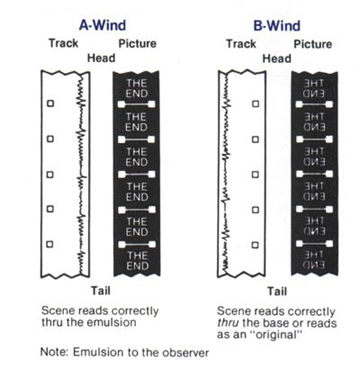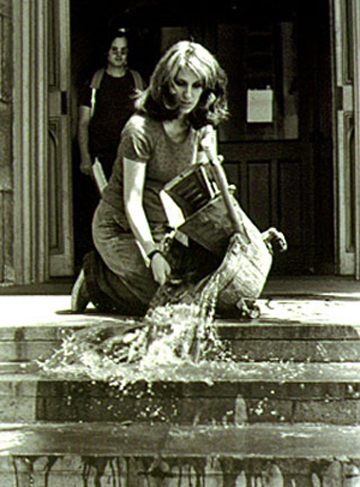
The term “emulsion to emulsion” has somehow stuck in my head from my undergraduate days, taking courses in photography. It is the phrase meant to remind you of the placement needed in order to expose a negative correctly: place the side that received the light down against the top face of the paper, also the light sensitive side. This is one of those phrases that may stick around – for the sake of scanning images, let’s say – but it will no longer bare any logical relationship to the original technical process, like using the “CC” field of an email, or hitting “shift” on a computer keyboard.
I started thinking about this because I have been working for the artist Mierle Laderman Ukeles to archive and organize her past projects. Mierle Ukeles has been an artist since the sixties, becoming well-known with her performances involving the city of New York City’s sanitation workers. She participated in the recent exhibition WACK! and has been canonized as a feminist artist of a certain generation. As I scan the only slides of these performances and other ephemeral works long-gone, I say to myself, “emulsion to emulsion.” This not only reminds me to place the piece of film the correct way in the scanner, but it also orients the slide in the same way it was held in the camera while capturing these past moments.
The slides I’m scanning for Mierle Ukeles are older than I am. There is an implied history in this process, but clearly “photography” is changing. I see more than a simple quantitative shift in our experience of photographic images. It is not just that there are more images and that they are easier to produce, but that images exist with the status of some vestigial agnomen, photography in name only, which relies on the premise that “photography” once existed.

Mierle Laderman Ukeles, "Maintenance Art Performance Series," 1973-74, Photograph of performance at the Wadworth Atheneum. Courtesy of Ronald Feldman Gallery
Image reproduction on the Internet has become a runaway phenomenon. It is widely understood as the largest threat to copyright law, but it sounds hyperbolic to say that the Internet alone has changed photography. (For the record, most reproductions on the Internet are protected by Fair Use precedents thanks to 2 Live Crew.) In the case of documented performance and ephemera, the concern about the sanctity of images is very real, but it is complicated by the very impulse that photography can also aim to dismantle the art object.
By now I’ve come to accept that the art of something sometimes lies beyond the thing itself. I’ve found this in my experience documenting and archiving for other artists as well as in my recent role as an intern for the e-flux video rental on Essex Street in the Lower East Side. Working with the extensive and growing catalog of videos, I have been responsible for insuring the continued life of the material, in all different formats, for the sake of this organic archive and exhibition. This has amounted so far to little more than copying “disk images” – another linguistic vestige derived from the “image” – onto a hard drive. This little image of a disk essentially emulates the commands of the DVD as well as the information stored on it. The immaterial image here has come to represent a set of functions to be carried out.

Much like that other use of the latin-derived “flux,” the projects at e-flux utilize the potential for enactment, the change possible through many iterations of representation. Both in their journal—which opts for a print-on-demand model—and in the e-flux video rental, the definitive physical form is not so much rejected as it is perpetually deferred. Through many reproductions one actually ensures the life of what is essentially there, which we know is not what is really there so much as it is the functions to be carried out. I’m reminded here, and with archiving generally, that truly the best way to ensure something carries on into the future is not to worry about protecting it, but rather to let it live, to copy it, reproduce, ensure its procreation. In the end, that sounds pretty human.



